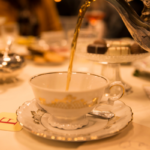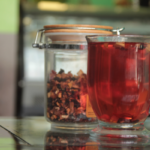Introduction
The production of flavored teas is a fascinating process that involves a combination of art and science. In this article, we will explore the secrets behind the production of these aromatic teas. We will delve into the importance and popularity of flavored teas, as well as provide an overview of the structure of the article.
Process of Selecting Tea Leaves
The quality of flavored teas heavily relies on the selection of tea leaves. The origin of the tea leaves plays a crucial role in determining the final product’s flavor. Different regions have distinct flavors in their tea leaves due to variations in soil composition, climate, and altitude.
Various types of teas are used in the production of flavored teas. Black tea, green tea, white tea, and oolong tea are some of the common types utilized. Each type offers a unique flavor profile that can be enhanced through the addition of aromas.
The process of harvesting and selecting high-quality tea leaves is integral to the production of flavored teas. Experienced farmers carefully handpick the leaves, ensuring that only the bud and topmost leaves are plucked. Attention to detail is crucial as the quality of the leaves directly affects the final taste.
Aromatizing Teas
The art of aromatizing teas revolves around infusing natural or artificial flavors onto tea leaves. Various aromas can be used, from traditional herbs and flowers to exotic fruits and spices. The choice of aroma depends on the desired taste profile and the creativity of the tea producer.
To infuse aromas into tea leaves, different techniques are employed. One common method is blending the teas with natural or artificial flavor extracts during the manufacturing process. Alternatively, tea leaves can be exposed to the aroma source, allowing them to absorb the flavors naturally.
Achieving the perfect balance between tea and aroma is crucial to creating a well-rounded flavored tea. Too much aroma may overpower the taste of the tea, while too little can result in a lackluster flavor. Expert tea blenders meticulously measure the ratio of tea to aroma to ensure the desired taste is achieved.
Adding Extra Ingredients
Flavored teas also incorporate a variety of additional ingredients to enhance their flavor profile. These ingredients can range from dried fruit pieces to spices and herbs. The inclusion of these extra ingredients adds complexity and depth to the tea.
The impact of these added ingredients on the quality and final flavor of the tea is significant. The choice of ingredients should complement the base tea and not overpower its natural flavors. Expert tea blenders carefully select and combine ingredients to create a harmonious blend.
Incorporating additional ingredients into flavored teas requires specialized processes. Techniques such as freeze-drying or dehydration are commonly employed to preserve the natural qualities of the added ingredients. These methods ensure that the flavors are concentrated and easily infused into the tea.
Drying and Storing Flavored Teas
The drying process of flavored teas is essential in preserving their taste. Various methods, such as air drying or oven drying, are employed to remove moisture from the leaves. The drying method chosen can significantly influence the flavor profile of the tea.
Proper storage is crucial to maintain the freshness and quality of flavored teas. Airtight containers, away from direct sunlight and strong odors, help retain the flavors. Tea enthusiasts often recommend storing flavored teas separately from other teas to prevent cross-contamination of aromas.
The shelf life of flavored teas varies depending on the ingredients used and the packaging. Sealed, airtight packaging can help extend the tea’s freshness and flavor for a longer duration. However, it is generally recommended to consume flavored teas within a year to ensure optimal taste.
Conclusion
Producing flavored teas requires a sophisticated and careful approach to achieve the desired taste. The process involves meticulously selecting high-quality tea leaves, aromatizing them with natural or artificial flavors, incorporating complementary ingredients, and properly drying and storing the final product.
Flavored teas offer a wide range of tastes and aromas that cater to tea lovers’ preferences. The intricate production process and attention to detail contribute to the uniqueness and value of flavored teas. Their potential for the food industry, as well as the enjoyment they bring to tea enthusiasts, solidify their significance in the beverage world.
In conclusion, the secrets behind the production of flavored teas lie in the artistry of blending flavors and the science of tea processing. The result is a delightful fusion of tastes that captivate the senses and provide a truly enjoyable tea-drinking experience.






